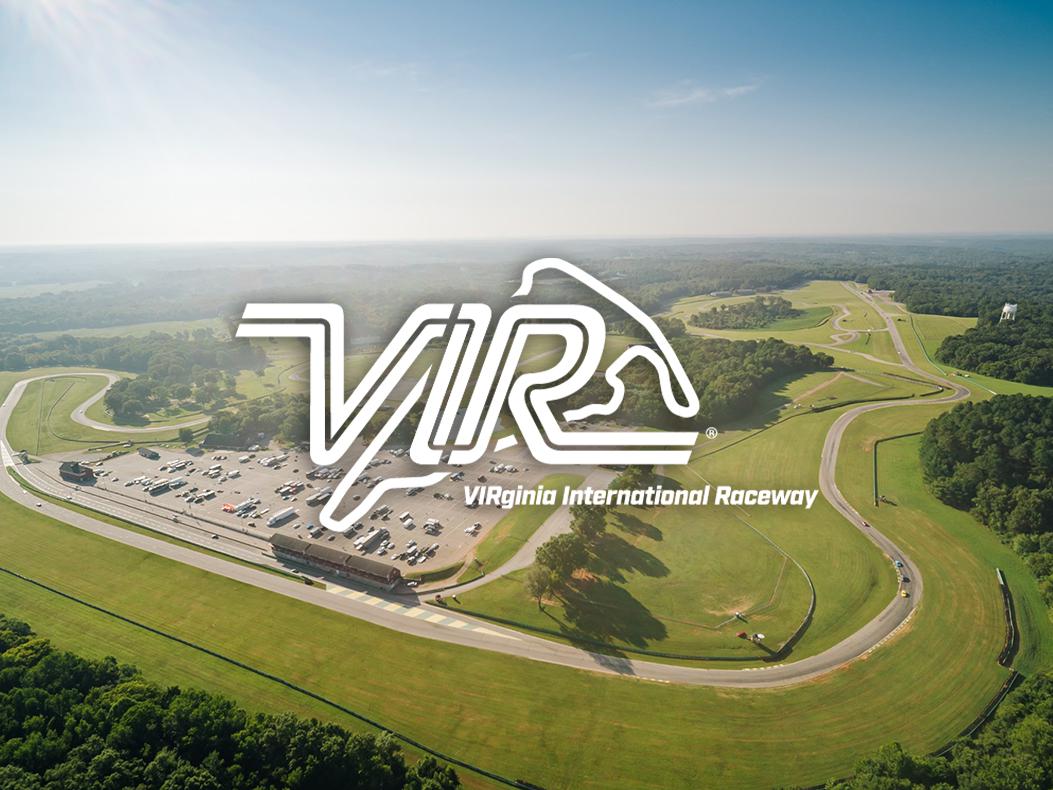Karting: Racing’s De Facto Entry Point
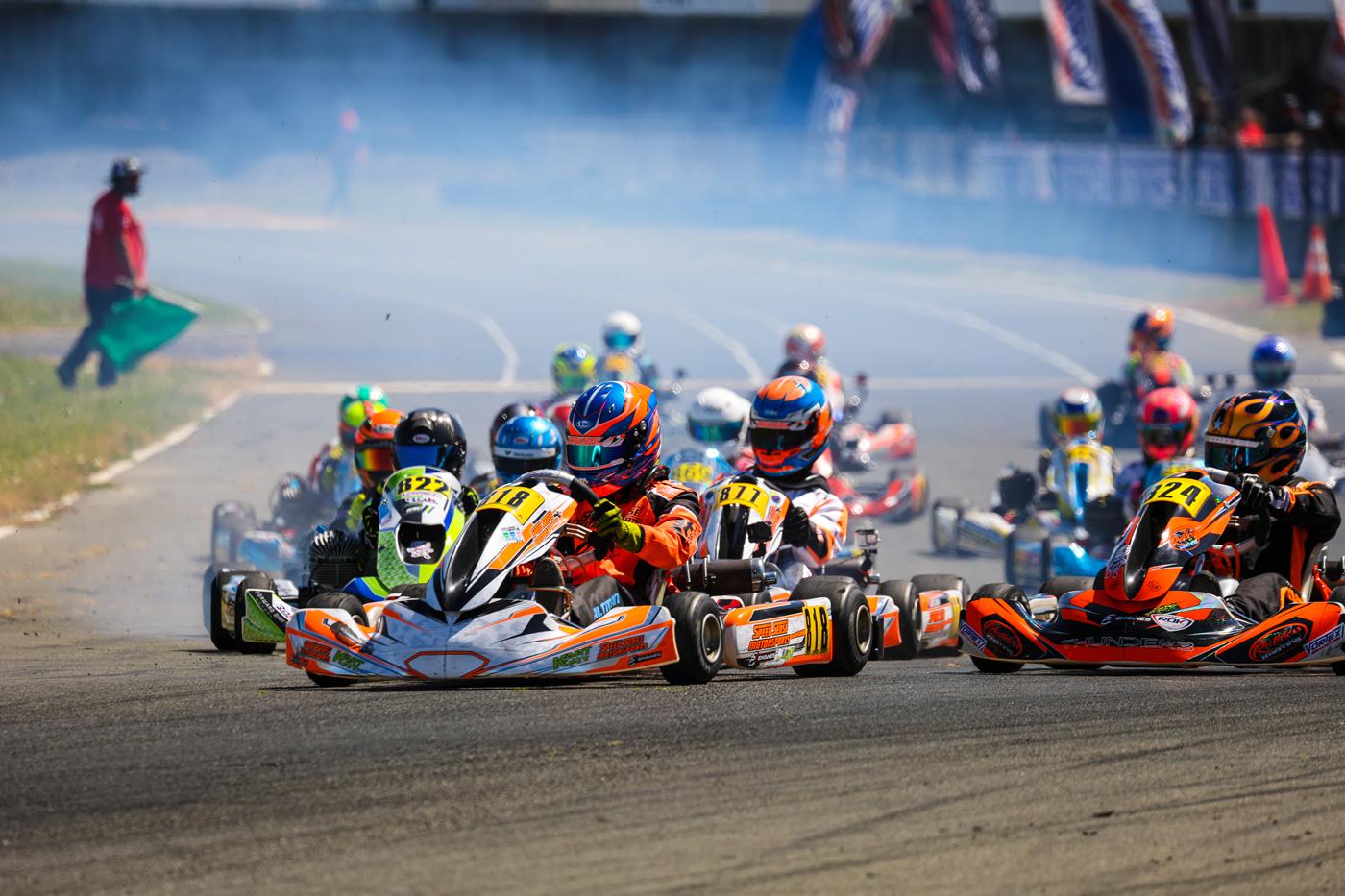
Photo courtesy of Sean Buur/Challenge of the Americas
What began as a hobbyist pastime has evolved into a nuanced and highly competitive motorsports discipline that’s been cited as a crucial step in many professional racers’ careers.
Back in the mid-1950s, fabricator Art Ingels was working at Kurtis-Kraft. At that point in time the Glendale, California-based shop was the nation’s top midget race car builder, so Ingels’ interests naturally gravitated toward diminutive platforms.
He wanted to take the quarter-midget idea a step further, so he began piecing together chromoly tubing in his garage to build a simpler, lighter, and smaller chassis, and he eventually paired it with a 2.5-horsepower two-stroke engine from a lawnmower. Ingels’ creation was an immediate hit when he debuted it in the pits at a Pomona Raceway event, and by 1957, a group of intrepid DIY racers had begun competing with their home-built karts on the Rose Bowl parking lot’s wide expanses of asphalt.
“At that point it was very much the realm of tinkerers,” observed Dan Roche of Briggs & Stratton Racing, Wauwatosa, Wisconsin, “people who could weld and had access to small engines who basically just said to themselves, ‘That looks like fun—let’s give it a try.’”
Over the next decade the concept of competitive karting started to take shape, but it wasn’t until the 1970s that it really began to develop into a motorsports discipline of its own. “That’s when manufacturers started to take notice of it as a potential market, and they started bringing purpose-built chassis, tires, and other components into the space,” Roche said. “The European side of kart racing really pushed the maturity further in the 1980s. That’s when you start to see Italian engines and chassis really becoming the gold standard for the sport.”
Today you’d be hard-pressed to find a driver on the Formula 1 grid whose early career in wheel-to-wheel racing didn’t include a stint in karting (see sidebar with driver Oscar Piastri on page 108). Although the sport has seen some significant changes over the past decade or so, it’s still considered an important steppingstone for young drivers who are looking to establish a long-term career in road racing—and for good reason.
Building A Solid Foundation
“There’s simply nothing that provides the same level of competitiveness that karting on a sprint track does,” said Brad Zoeller of TS Racing, Bushnell, Florida. “You will never race with more people that close together with that same level of intensity. That’s what makes it such a good training ground for young drivers—you learn a skill set that can be translated into big-car racing.” Beyond developing car control and general racing strategy, karting also allows competitors to familiarize themselves with other crucial aspects of motorsports very early on.
“Although it’s a rigid chassis without a suspension, you still have camber, toe, ride heights, and other setup variables to contend with, and small adjustments can make a big difference,” he explained. “Tire pressure adjustments, for example, are typically made to the tenth of a psi.”
But as Andy Seesemann of Full Throttle Karting in Orange, California, emphasized, sheer accessibility is perhaps karting’s biggest draw. “Today there are teams spending upwards of six figures, but you can still find a $3,000 used kart on Craigslist and go to a track to run laps for $50.”
The emergence of indoor karting tracks has made the discipline more accessible than ever. “That has brought the concept to the masses in a way that just wasn’t available in the 1990s,” explained Mike Smith of K1 Circuit, Winchester, California. “Back in the day, you kind of needed to be in the know. As a kid, I found out about karting because of a dirt race that was held at the local horse arena. But now you have all these indoor facilities popping up, and they remove even more barriers to entry. A parent can bring their kid to one of these tracks and kind of dip a toe in the sport to see if a larger investment makes sense.”
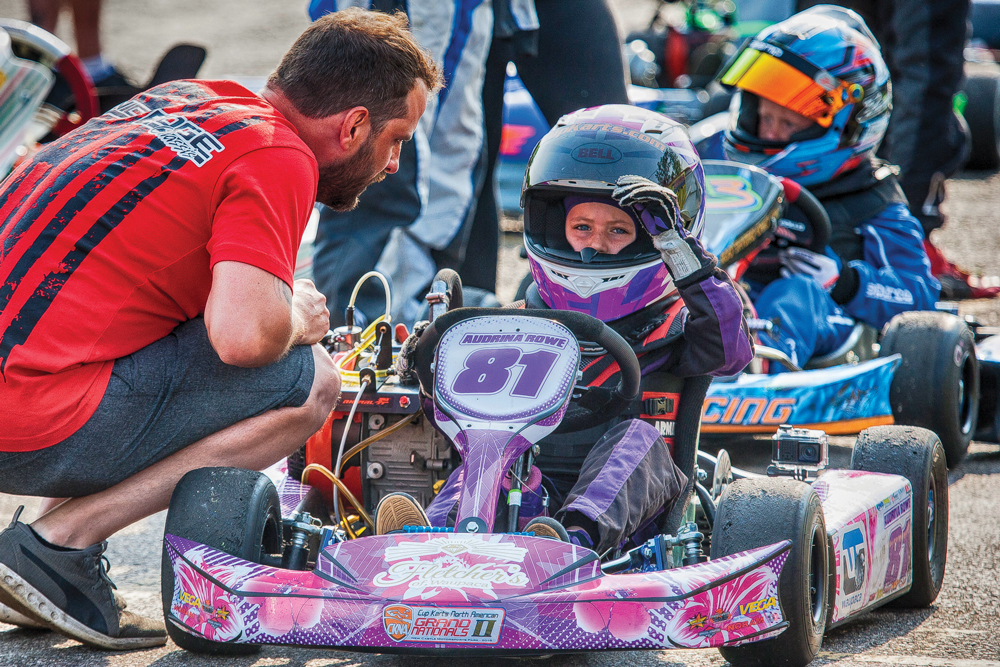
From The Garage To The F1 Grid
Another factor that has helped karting gain traction in recent decades is a class structure that allows young drivers to move up the ranks progressively rather than being immediately dropped into the deep end of the pool.
“That structure makes the sport more approachable early on,” said Roche. “You have the Kid Kart class for ages 5 to 7, the Cadets for 7 to 9, Sportsman for 9 to 11, Junior for 12 to 15, and then anyone 15 or older runs in Senior. So by the time you’re 15 years old, you could have potentially participated in four or five different classes. That means you’re always going to be competing against other drivers that are at your development level.”
As we’ve seen in a number of other motorsports disciplines in recent years, spec-style racing has become incredibly popular in karting. “Today the sport is essentially divided between two-cycle engines and four-cycle engines,” Zoeller said. “Possibly the biggest change we’ve seen over the past 20 years is the introduction of a sealed four-cycle motor—the Briggs and Stratton Local Option 206. That’s now the biggest class you’ll find anywhere.”
Its popularity stems from the same rationale found in other forms of the sport where spec racing has found a foothold: It’s an effective way to create an environment that rewards talent and tuning rather than out-spending the competition to snag a podium position.
This sealed motor has moved the focus away from the mechanical elements of the kart to a tangible degree in the class it’s used in, but Smith noted that he has seen a similar shift across the board. “The biggest change I’ve noticed over the past decade or so is a transition from traditional brick-and-mortar shops to a ‘race team support’ business model,” he explained. “Instead of going to a few different shops to mingle and source parts, now you’re getting your stuff from a race team that’s also supplying all of the services that you would need—kind of an ‘arrive and drive’ type of situation. The teams are also providing coaching, data, and all the other elements required to make it a one-stop shop.”
Meanwhile, Seesemann told us that there are some fundamental differences between how series in the United States and Europe operate. “You won’t see the same type of ‘spec’ engines at the world championships in Italy. They have to be more or less built to the same ‘spec,’ but six different manufacturers make an engine for that, whereas here in the US each series has its own engine manufacturer that backs it.”
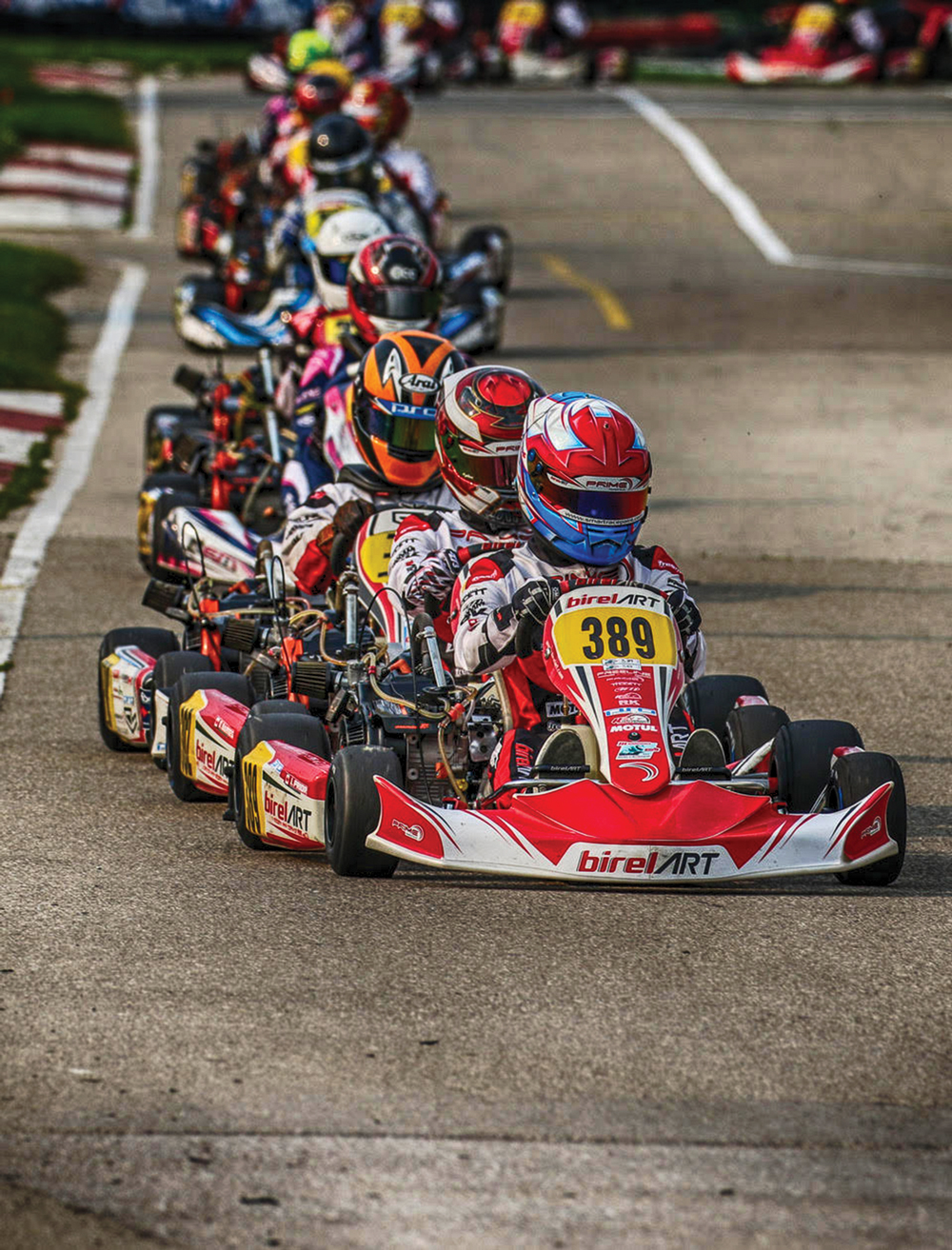
It’s a dynamic that speaks to a larger fragmentation of the sport that has developed here in United States.
“There are a lot of different organizations running events right now, which is not necessarily a good thing,” said Zoeller. “As a number of different motorsport disciplines have discovered over the years, all you are really doing is taking the same pool of drivers and dividing them up into smaller groups. Having too many classes can be problematic on some levels, too. I think the reason that the European drivers tend to be so much better is because there’s a Junior class, a Senior class, a Shifter class, and that’s it. Instead of dividing the pool of drivers into five different classes, like we do in the US, a lot of the kids who would have been put into different classes are running against each other, and it’s collectively making them stronger competitors.”
While opinions differ on the correct path forward, Roche said that interest in the sport is on the upswing. “There is definitely some Drive To Survive energy surrounding kart racing right now.”
The popular Netflix reality show chronicles the race seasons of various Formula 1 teams, and the drivers’ roots in kart racing are often cited in both their development paths and their relationships with other F1 racers, many of whom originally met in karting series during their formative years.
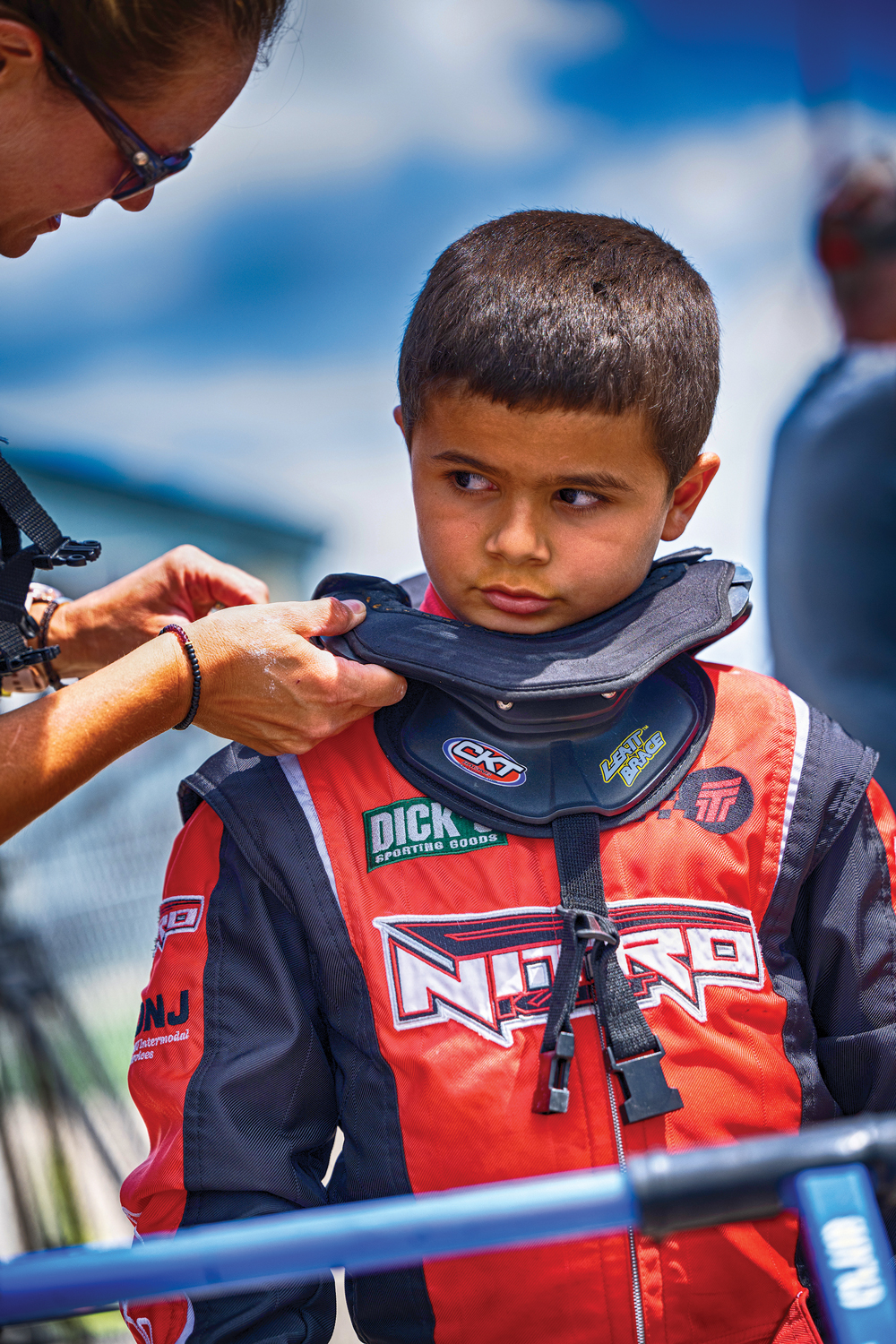
“COVID-19 was also actually very good for karting,” Roche added. “For a while it was one of the few things you could do that was socially distanced by nature, and many people looked at the downtime as an opportunity to check a few things off their bucket lists. It brought a surge of demand to our business.”
The Road Ahead
Social media, YouTube, and shows like Drive to Survive have helped to bring more visibility to karting, and the sport still remains one of the best options available for young drivers who’re looking to get into wheel-to-wheel racing, but some are concerned that domestic fragmentation of the sport is hampering efforts to bring new competitors into karting.
“There really isn’t a cohesive strategy at this point,” Seesemann said. “Things like Facebook and race streaming help, but for the most part, people aren’t going to ‘stumble upon’ karting in that way, so there has to be more of a concerted effort. One thing that surprises me is that you don’t really see these companies with booths at major NASCAR and IndyCar races and events like that. Costs and logistics are likely to be factors there. I think that if some of those series recognized that their customers came from karting and did a better job of reaching out to the sport to look into ways to provide these businesses with a space to advertise to those motorsport fans, it could have a meaningful impact.” As it stands now, word-of-mouth remains the strongest driver of new interest in karting.
“Word-of-mouth has always been the most effective method for new people to find out about karting,” said Smith. “CalSpeed, for example, used social media extensively for promotions, but it was largely word-of-mouth that got the job done. That seems to be the case for most organizations—one hardcore racer knows two other ones, and those two know three more between them, and it just keeps spreading from there as long as you have a good product. With social media you’re casting a pretty wide net, and I think a more targeted approach—that is, going to places where you already have racing enthusiasts—is ultimately going to yield better results.”
Looking down the road, organizers are also focused on adapting to a changing motorsports landscape.
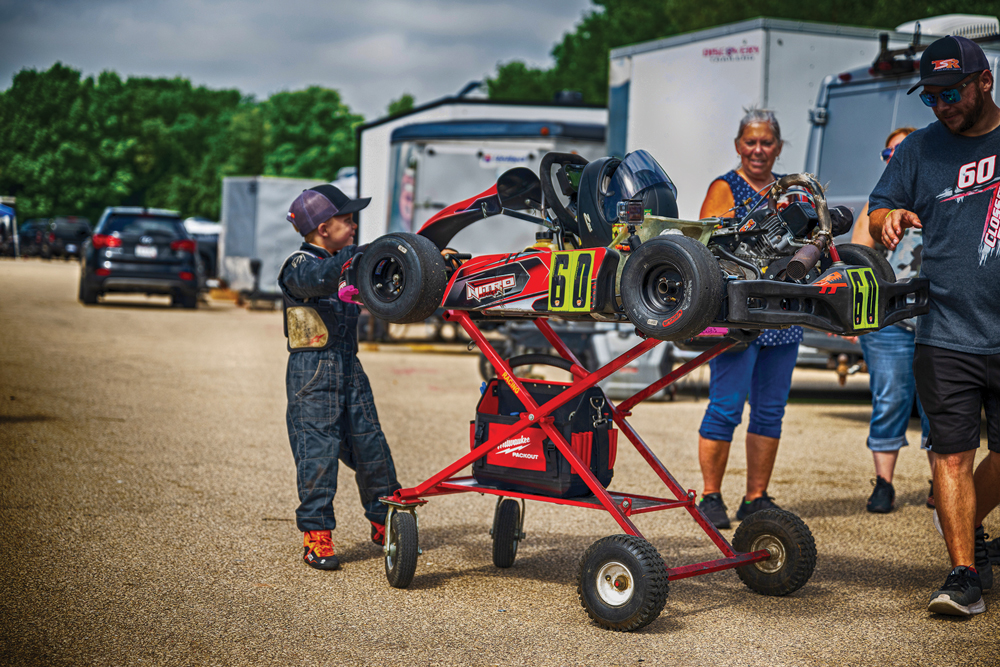
“I definitely think that there’s an electric power plant that is right for karting racing,” said Roche. “The hurdle that we’re facing right now is basically the same one that every EV interest has: infrastructure. Most kart tracks just don’t have the facilities to support the power requirements, and bringing a portable generator to charge a battery to go racing just doesn’t seem productive. I think there’s an electric version of karting that’s going to emerge fairly quickly, but the infrastructure requirements must be addressed in order to make it viable.”
Seesemann also sees an opportunity for electric karting to make inroads in the future, after some of the early challenges are addressed. “Several companies are currently working on it, and they’re facing the same obstacles we’re seeing with EVs in other forms of motorsport in terms of trying to make it cheap enough, light enough, and charge fast enough.”
But K1 has used electric karts at its indoor tracks for some time now, and Smith said the company is in the midst of developing a package that could see use in higher tiers of competition sooner rather than later.
“This kart offers speed that’s comparable to the ROK VLR or IAME KA engines, which are the primary two 100cc packages that are available today,” Smith explained. “Concerns about noise and EPA regulations may be driving a lot of this development, but I recently had a chance to drive one, and it’s definitely a good time.”
Karting’s Ladder to Formula 1
In only his first year of Formula 1 and having already earned two top-five finishes (as of press time), F1 driver and HP Tuners athlete Oscar Piastri attributes the racing skills he uses at each event on the worldwide racing stage to the disciplines he learned early on in his motorsports career with karting.
“I started karting when I was 10, and a lot of the lessons that I learned back then have helped me on the ladder up to Formula 1,” Piastri told PRI. “There is no better way to learn the basics and fundamentals of racing.”
He began his karting career in his home country of Australia. “Karting is where you learn your race craft, hone your skills, and get used to going wheel-to-wheel,” he said. “It’s also where you first start dealing with competition, and the emotions of winning and losing. It’s obviously a lot rawer than Formula 1, but it’s pure racing, and you still have to be precise and accurate. It’s a fantastic discipline to refine your skills.”
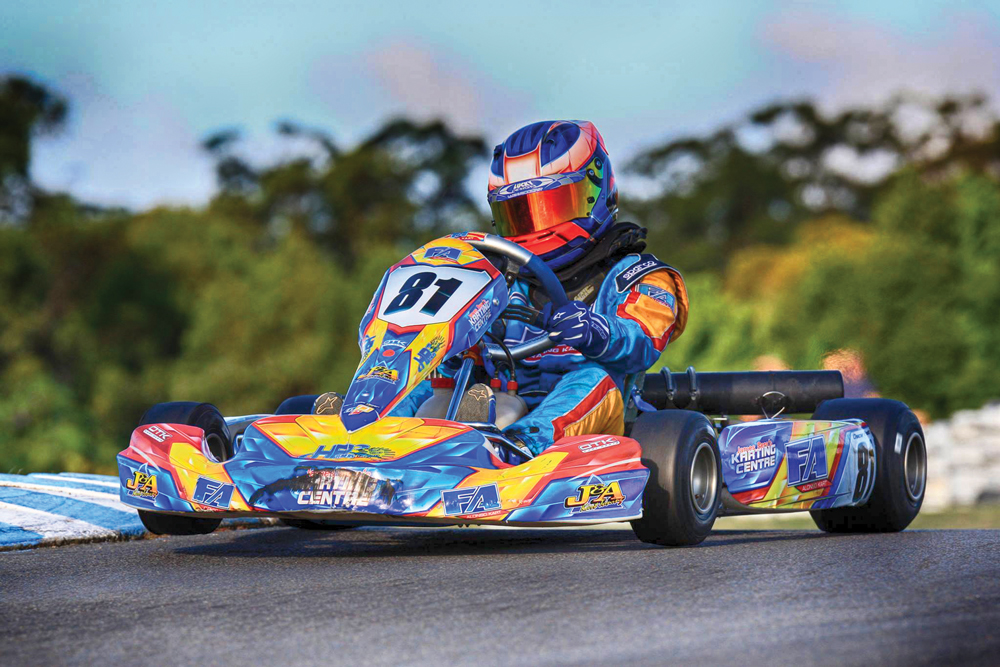
Those skills he learned include overtaking competitors, braking at the right moments, finding the racing line, and more. “But away from the track,” he added, “there is a great camaraderie amongst drivers, and that is a great community to be part of. It’s old-school racing, and it is built on respect.
“It also educates drivers about all the other little things that nobody thinks of, like sponsorship and how to present yourself and conduct yourself in a professional manner.
“But more than anything, it is just great fun,” he added.
In addition to his F1 driving duties, Piastri also serves as a global ambassdor for HP Tuners, which he described as “a fantastic company that specializes in tuning and diagnostics in the aftermarket performance sector.”
SOURCES
Briggs & Stratton Racing
basco.com
Full Throttle Karting
HP Tuners
hptuners.com
K1 Circuit
k1circuit.com
Oscar Piastri
oscarpiastri.com
Scribner Plastics
scribnerplastics.com
TS Racing
tsracing.com
 MEMBERSHIP LOGIN
MEMBERSHIP LOGIN JOIN PRI
JOIN PRI
